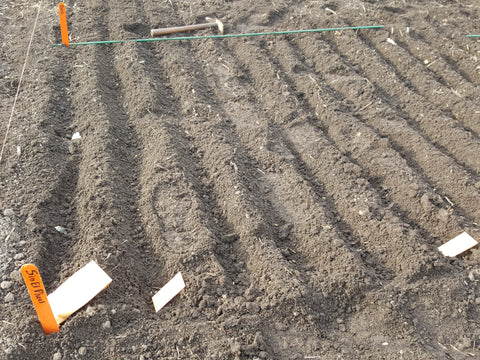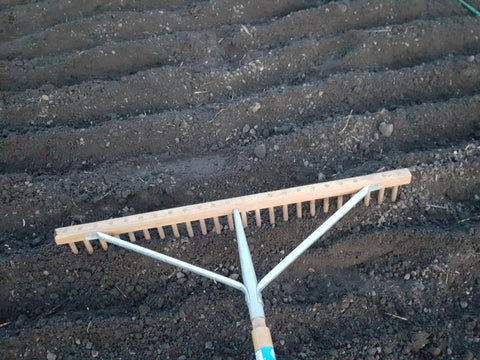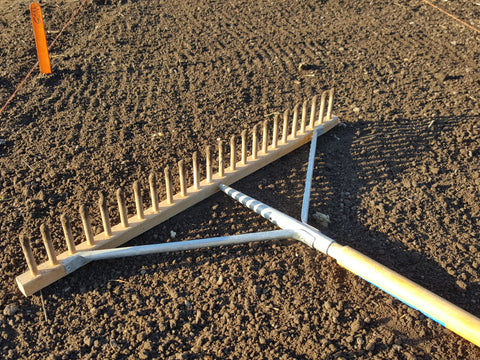In late March, sunny blue skies had me thinking about planting spring wheat and barley. This 25 ft by 100 ft plot to plant spent two years planted with squash and melons on black plastic, heavily mulched with plant debris between the rows. As we pulled up the plastic, we were pleased to see evidence of plenty of earthworm activity. The plant mulch was raked up and moved. I wanted to minimize disturbing the soil structure, so only very lightly tilled the top 2 inches before raking it level using a steel rake.

In the spring, there is a period where the native grasses grow incredibly fast before the trees leaf out and shade them. Pulling aside the dead grass, I'm not yet seeing many shoots. With several inches of snow still in the shadows, my concern is will the seeds germinate before they rot.
Here is a nice table from the Soil Temperature Guide (G2122) from the University of Nebraska:
This kitchen thermometer is a probe.

The soil 1.5 to 2 inches deep was running 32~35 degrees F but a week later the dark soil was reading 50 degrees F, so, let's grow!
I like to measure and stake out my plots. I started the marking while waiting for the soil to warm up. I stretch long lengths of baler twine to create each plot. Later in the season, this will get tied together and rolled up on an old spool. I do this to create border of where not to step. My furrows come out straighter and parallel, but I doubt the plants care.
I make two plot sizes: 4 ft wide for special seed production and 10 ft wide for a few larger volume choices...

This year, I've decided to use a common 8 inch furrow spacing. I have a new weeding tool to use this year, and it's going to need consistent spacing. I took my 'spare' wooden seedbed preparation rake and removed teeth to give me this tool to very quickly strike lines in the soil. I like the two foot wide wooden rakes for final seedbed preparation because they are wide and light. Mine came from Scythe Supply.


Following the lines, I use a long-handle hoe to create the furrows and refine any shallow spots with my hoe dag.

Here I've finish placing 3 strains of Sin El Pheel wheat.

I close the furrow with the wooden rake.

I use my feet to pack the soil to give good contact between the soil and seeds. I work my way long the 'field' by standing on the work I've completed, otherwise, I make a mess of my lines and furrows.

The last touch is to gently rake it smooth. If it doesn't confuse the blackbirds, at least it will look nice. From attending large scale organic farming conferences earlier in the year, I learned they do a blind cultivation to kill the weeds just before the grain emerges. I plan to give a light raking at the right time...weather permitting.

To keep each wheat or barley strain pure, I alternative patches of wheat, barley, wheat, barley and so on. That way, no two wheat types can physically 'touch' each other for potential unwanted pollen transfer.

Scott
